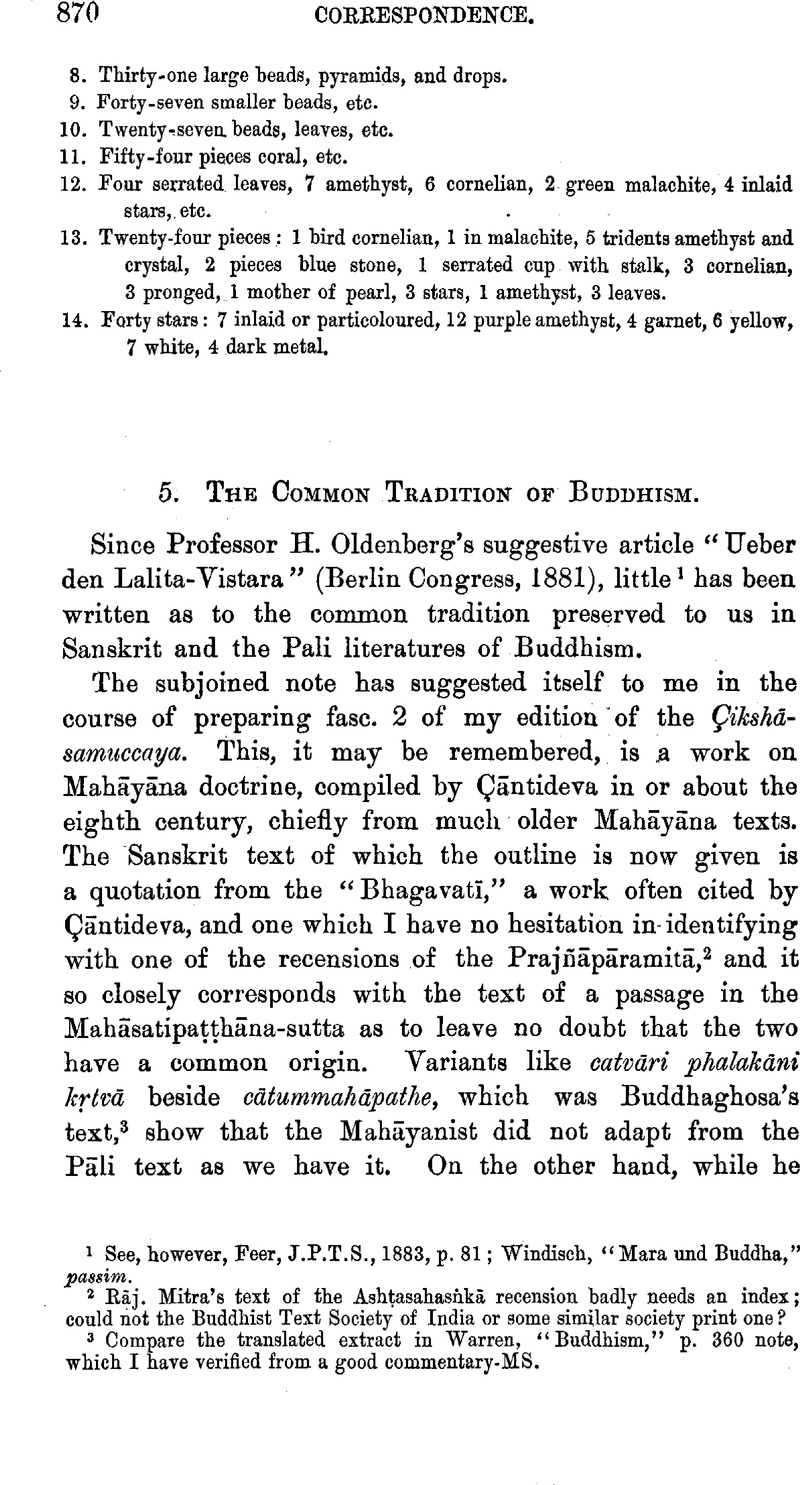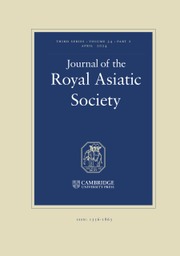No CrossRef data available.
Article contents
5. The Common Tradition of Buddhism
Published online by Cambridge University Press: 15 March 2011
Abstract

- Type
- Correspondence
- Information
- Copyright
- Copyright © The Royal Asiatic Society 1898
References
page 870 note 1 See, however, Feer, , J.P.T.S., 1883, p. 81Google Scholar; Windisch, “Mara und Buddha,” passim.
page 870 note 2 Rāj. Mitra's text of the Ashṭasahasṅka recension badly needs an index; could not the Buddhist Text Society of India or some similar society print one?
page 870 note 3 Compare the translated extract in Warren, , “Buddhism,” p. 360Google Scholar note, which I have verified from a good commentary-MS.
page 871 note 1 It is to be regretted that the Pāli Text Society's text of this nikāaya has stuck fast, since 1889, at sutta 13. See, however, Majjh.-n., i, 57–9, and Trenckner, ibid., 532.
page 871 note 2 It is this short refrain occurring at the end of each section of the Pāli (Warren, 356.16, 360. 5, etc.) that is probably omitted here and below by the ‘pe[yālam]’ of the Sanskrit.
page 872 note 1 See Khuddaka-pāṭha, §3, J.R.A.S., N.S., Vol. IV, pp. 311, 326.
page 872 note 2 These last two ākāras, of which I have found mention in other Mahāyāna works, form an addition to the list of thirty-two. A similar list had been cited in the passage immediately preceding the present extract from another Mahāyānasūtra; and several similar citations occur in the Bodhicaryāyatāraṭīkā (ed. Poussin, pp. 295, 324–5).
page 873 note 1 A doubtful form: cf. Mahāvyutp. §52.
page 873 note 2 Nos. 7 and 8 (§ 14, 15 of the Pāli edition).
page 873 note 3 The Sanskrit equivalent of this is śivapathikā, a word not previously known to lexicons. The exact meaning seems to be the corner of a cemetery, where (as we still find in countries as far west as Brittany and the Canary Isles) old bones are thrown and left exposed. It may be of interest to record that Dr. Bühler's last communications to me were two postcards, written 29th and 31st March last (only a few days before his death). He shows by passages like Ep. Ind., i, 108, verse 3a, that S′iva, as ‘chief of the goblins,’ haunts burialgrounds. “The Pali sīvathikā” (he adds) “is in my opinion a contraction of *siavathikā, which stands for śivapathikā with the softening of medial pa cpr. vyāvaṭa for vyāpṛta ⃜. and [for the contraction] Sanskrit vānara for vananara.”




